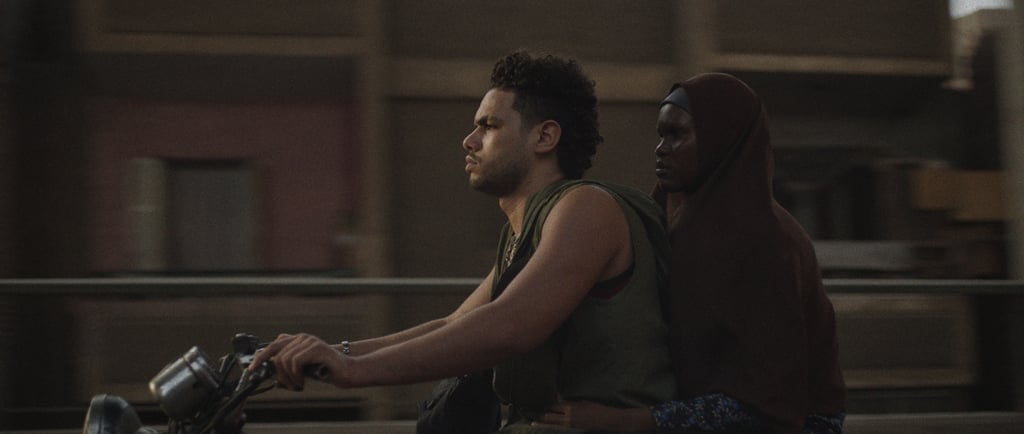Why do Egyptians in Egyptian films feel European?
BLOG
Alaa Tamer
11/13/2025


In Theory, one way that “Art/ Alternative and Festival Films” are different from “Mainstream/ Commercial Cinema”, is: Mainstream Cinema is meant to follow certain rules, certain conventions, please those with the money, and cater to specific demographics and audience expectations. In contrast to Art Cinema which is all about Freedom of Artistic Expression, and rebellion against all those conventions and requirements.
But the reality can be very different, as Festivals and Funds and types of film audiences grow and grow turning into another system, another machine in itself, with their own conventions and requirements.
One example of that is “Slow Cinema”, Slow Cinema was (and still is) a subversion, a response, an alternative to the loud, attention grabbing, overstimulating commercial cinema (and a meditative alternative to a quickly moving disorienting real world). What started with World War II realist cinema in Italy and Japan, a way to show “The Real World as it is without any exaggerations or spices”, turned into another hyperreality, more poetic and contemplative, in the hands of masters like Tarkovsky, Bresson, Akerman, Liang and Weerasethakul, a style that Paul Schrader famously called "Transcendental Style in Film”.
But then, more and more films in every Festival, winning every Award, are getting slower and slower, and less transcendental, and less special. It starts to feel less like a choice and more like a mandate.
We do need slow cinema in this ADHD inducing, reels and tiktoks filled, hyper stimulating world we live in, but when it turns into a de facto style it limits the means of expressing and representing the world that cinema can (and should) provide. But the bigger problem is when this mostly European style of filmmaking sneaks into films from the rest of the world, when emerging third world cinema from different countries with different stories to tell, feel the same.
Case and Point, Egyptian Arthouse Slow Cinema from after the 2011 Arab Spring. Hala Lotfy’s 2012 film “Coming Forth by Day” was not only a powerfully heartbreaking film, but also a pioneering film. The images looked cold, grey and uncomfortable, the silence heavy and unbearable, and the deliberate pacing puts you in the shoes of its main character.
But the film perhaps became too influential, as other indie Egyptian films that came out at this period started following its footsteps, to varying degrees of beauty and success, “Withered Green”, “Poisonous Roses”, “The Giraffe”, “Certified Mail”, “Aisha Can’t Fly Away”, “Feathers”, “The Call of The Brook”, “I’m Afraid to forget your face”, “The Tedious Tour of M” , “Perfumed with Mint” just to name a few. (Some of those are favorite Movies of mine, and some I hate, I won’t say which because this isn’t the point).
Most fiction short films made by cinephiles and aspiring filmmakers with no budget also use similar style and pacing, even Ahmad Abdulla El Sayed, who was at one point Egypt’s most prominent and different indie filmmaker, has defaulted to the same style in his latest film “19B”.
Nothing against any of those films, but they can blend in with similarly slow films from Lebanon, Palestine, or France or Germany, and the problem of cultural specificity starts to arise. Should movies from different countries about different experiences look and feel the same? There’s an old cliche that Egyptians are very loud and joke in the hardest times, which is a cliche for a reason, even the most poor and miserable of Egyptians can be very talkative. This isn’t a rule of course, but why do Egyptians in Egyptian films feel European?
Filmmakers are forced into that spot. Making a film is very difficult, and getting the funding and the necessary resources isn't easy in ANY part of the world, but it's even harder for a filmmaker in a third world country. So, they spend years pitching their films at film festivals around the world, collecting the budget one small fund at a time, in a very demanding and competitive process. But this process becomes a filter, and the results of any “filter” get homogeneous and follow certain criteria.
All movies are controlled by capital, not just studio films. Art has always been controlled by money, but can't we do better?
There is some change happening, Egyptian Indie Cinema is starting to branch out, trying out different styles and moods that more widely reflect the broad spectrum of a specific Egyptian experience, films like “East of Noon” and “Spring Came in Laughing” (Both directed by women) are loud, talkative, noisy and full of life. But those films deserve their own articles.
But I am more interested in what “Seeking Haven for Mr. Rambo” did, it doesn't break the formula, it doesn't solve that lingering essay that bogs down Egyptian Cinema’s potential to actually reflect real life. And yet, the film feels different, the film feels more authentic, it somehow doesn't feel as “European”.
Perhaps that's because it feels more “American”, more influenced by Paul Schrader's films studying male loneliness than his theories on Transcendental Style. The film is more in line with “Taxi Driver” or anything starring Ryan Gosling before he started making films for his kids (kudos to him). The result is still a slow film where the main character doesn't speak a lot, but the effect is very different: The character not speaking a lot is a character flaw.
His “slow festival cinema protagonist” passivity and melancholy are holding him back, it made him lose his girlfriend, and is endangering him losing his home, his mother, and his dog. The film acknowledges that he is antisocial, he suffers the same social isolation and aversion to engage and take action in the world, that an entire generation his age is suffering from.
I am not saying this is unique, as only a year before, Saudi Arabia gave us its version of a modern Arab Paul Schrader protagonist in “Mandoob”, but I am saying it feels timely, and lively.
Egypt still feels ugly, like many of the indie films I mentioned above, but it feels alive, less like a lifeless graveyard and more like a vivid circle of hell. Cairo feels like Cairo, or director Khalid Mansour’s vision of Cairo, but not the vision of a European giving a fund, or a cinephile too influenced by Tarkovsky, or a filmmaker who doesn't have enough budget to show Cairo in any meaningful way.
To be fair, part of why “Rambo” feels more alive is that they were actually able to shoot outdoor scenes. Post-2014 Egypt has been suffocated in the way that no one was allowed to shoot anything outside. A wall of paranoia and bureaucracy prevented: -Egyptian Movies from having outdoor scenes -Foreign projects that take place in Egypt (“Moon Knight” and “Wonder Woman 1984” as examples) from being shot in Egypt -Even travel bloggers and normal Egyptians found their cameras being taken from them.
But those restrictions have relatively laxed, allowing for easier permits for exterior scenes, foreign films like “Back to Alexandria” or “Inheritance” were shot in Egypt, and Ramadan dramas and shallow comedies suddenly had way more exterior scenes shot in the streets of Cairo and Alexandria and not on fake soundstages. It's still not ideal, “Rambo” itself faced problems regarding what it can show on those exteriors' shots, but the change is noticeable, and worth discussing.
The people don't always see themselves in commercial and mainstream works, as the gap between the industry and everyday people widens in so many ways. And indie cinema as an alternative should aspire to actually show the real world. It can and should take swings, be weird, surreal, impressionistic, artistic, opinionated, subconscious, and free, but still feel like a result, a reflection, or a reaction, to a world that actually exists.


